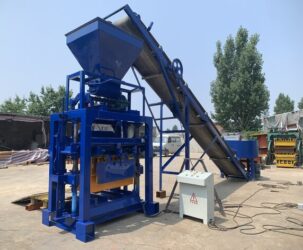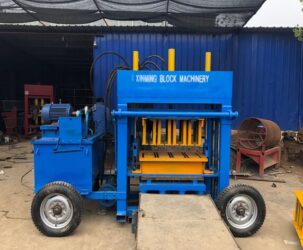
Abstract
This study focuses on the Block machine Shapes produced by Tanzanian brick machines, exploring the variety, quality, and marketability of these bricks. Tanzania, a country rich in natural resources, has witnessed a growth in the construction industry, leading to an increase in the demand for bricks. The study aims to analyze the current brick shapes available in the market, their suitability for different construction applications, and the potential for innovation in brick design. The research methodology involves a survey of brick manufacturing facilities, interviews with brickmakers, and a market analysis. The findings reveal a diverse range of brick shapes, with traditional rectangular bricks dominating the market. However, there is also a growing interest in innovative shapes that offer improved structural performance and aesthetic appeal. The study concludes with recommendations for future research and development in the Tanzanian brick industry.
Introduction
Tanzania, located in East Africa, has a vibrant construction sector that has been experiencing steady growth in recent years. As the country’s urbanization and infrastructure development continue to progress, the demand for building materials, particularly bricks, has increased significantly. Brick machines, which automate the brick-making process, have become crucial in meeting this demand efficiently.
The quality and shape of bricks produced by these machines directly impact the quality of construction projects. Therefore, understanding the range of brick shapes available, their suitability for different applications, and the potential for innovation is crucial for the Tanzanian brick industry. This study aims to provide a comprehensive analysis of the brick shapes produced by Tanzanian brick machines and their impact on the construction industry.
Methodology
To conduct this study, a mixed-methods approach was adopted, combining quantitative and qualitative research techniques. The research methodology involved three main components: a survey of brick manufacturing facilities, interviews with brickmakers, and a market analysis.
1. Survey of Brick Manufacturing Facilities
A survey was conducted to collect data on the types of brick machines used in Tanzania, the range of brick shapes produced, and the production processes. Questionnaires were distributed to brick manufacturing facilities across the country, focusing on machine types, brick dimensions, and production capacities.
2. Interviews with Brickmakers
Semi-structured interviews were conducted with brickmakers to gain insights into their experiences, challenges, and innovations in brick production. These interviews explored the reasons for choosing specific brick shapes, the market demand for different shapes, and any challenges faced in producing innovative brick designs.
3. Market Analysis
A market analysis was conducted to assess the demand for different brick shapes in the Tanzanian construction industry. This involved collecting data on brick prices, sales volumes, and consumer preferences. Additionally, a review of industry trends and policies related to building materials was conducted to identify potential opportunities and challenges for the brick industry.

Results and Discussion
1. Types of Brick Machines and Brick Shapes
The survey revealed that Tanzanian brick manufacturers primarily use hydraulic and mechanical brick machines. These machines are capable of producing a range of brick shapes, including rectangular, square, and occasionally, specialized shapes like interlocking bricks. Rectangular bricks are the most common, owing to their structural efficiency and ease of production.
2. Suitability of Brick Shapes for Different Applications
The rectangular bricks are widely used in walls, fences, and other structural applications due to their strength and stackability. On the other hand, interlocking bricks, which have a unique design that allows them to fit together without mortar, are gaining popularity in sustainable building practices. These bricks offer improved energy efficiency and reduce the need for mortar, making them suitable for low-cost housing projects.
3. Market Demand and Consumer Preferences
The market analysis showed that there is a growing demand for bricks with innovative shapes and designs. Consumers are increasingly aware of the aesthetic value of bricks and are willing to pay a higher price for bricks that offer unique visual appeal. Additionally, there is a demand for bricks that are eco-friendly and contribute to sustainable construction.
4. Challenges and Opportunities for Innovation
Brickmakers interviewed expressed challenges in producing innovative brick shapes due to limitations in machine capabilities and production costs. However, they also recognized the potential for growth in the market by developing new brick shapes that cater to specific construction needs or aesthetic preferences.
Conclusion
The study provides a comprehensive analysis of the brick shapes produced by Tanzanian brick machines and their impact on the construction industry. It highlights the diversity of brick shapes available, their suitability for different applications, and the potential for innovation in brick design. The growing demand for innovative and sustainable brick shapes offers opportunities for brick manufacturers to develop new products and expand their market share. Future research can focus on exploring new brick shapes and materials that cater to specific construction needs and contribute to sustainable development in Tanzania.

 By Anna
By Anna
